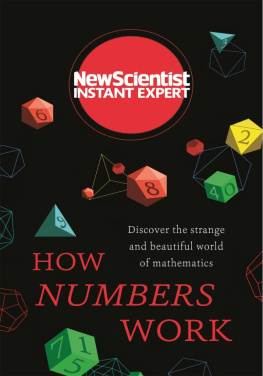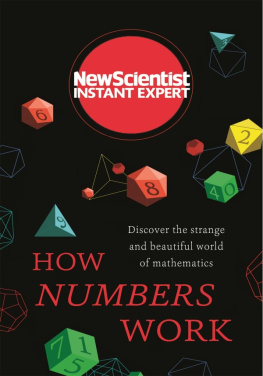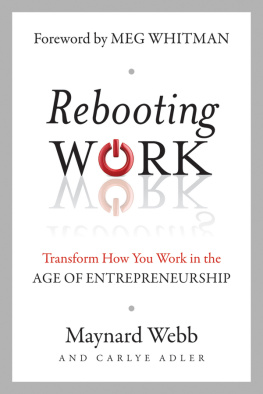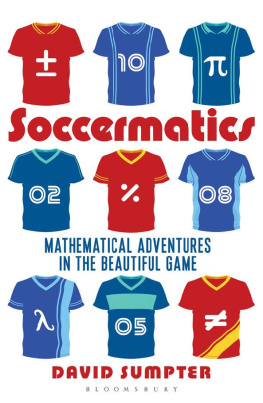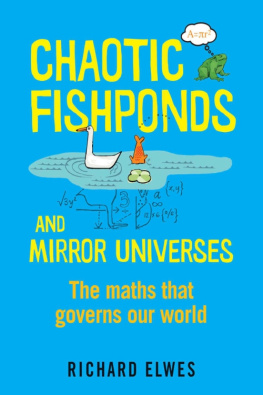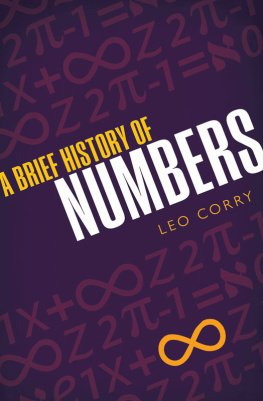How Numbers Work
Discover the strange and beautiful world of mathematics
NEW SCIENTIST
Contents
Series introduction
New Scientists Instant Expert books shine light on the subjects that we all wish we knew more about: topics that challenge, engage enquiring minds and open up a deeper understanding of the world around us. Instant Expert books are definitive and accessible entry points for curious readers who want to know how things work and why. Look out for the other titles in the series:
The End of Money
How Your Brain Works
The Quantum World
Where the Universe Came From
How Evolution Explains Everything about Life
Why the Universe Exists
Your Conscious Mind
Machines That Think
Scheduled for publication in 2018:
Human Origins
A Journey through the Universe
This is Planet Earth
Contributors
Editor: Richard Webb, Chief Features Editor at New Scientist
Instant Expert Series Editor: Alison George
Instant Expert Editor: Jeremy Webb
Guest contributors
Richard Elwes wrote parts of the chapter on infinity and The algorithm that runs the world in . He is a writer, teacher and researcher in mathematics, and a visiting fellow at the University of Leeds, UK. His latest book is Chaotic Fishponds and Mirror Universes (2013).
Vicky Neale wrote about the twin primes conjecture in . She is the Whitehead Lecturer at the Mathematical Institute and Balliol College at the University of Oxford, UK, and author of Closing the Gap: The Quest to Understand Prime Numbers (2017).
Regina Nuzzo wrote the section on frequentist and Bayesian statistics in . She is a writer, statistician and professor at Gallaudet University in Washington, DC.
Ian Stewart wrote the sections on the empty set in , as well as the conclusion on what makes maths special. He is Emeritus Professor at the University of Warwick, UK, and the author of numerous books on mathematics, the latest of which is Calculating the Cosmos (2017).
Thanks also to the following writers and editors:
Gilead Amit, Anil Ananthaswamy, Jacob Aron, Michael Brooks, Matthew Chalmers, Catherine de Lange, Marianne Freiberger, Amanda Gefter, Lisa Grossman, Erica Klarreich, Dana Mackenzie, Stephen Ornes, Timothy Revell, Bruce Schechter, Rachel Thomas, Helen Thomson.
Introduction
In 2014 the Iranian Maryam Mirzakhani became the first woman to win the highest honour of mathematics, the Fields Medal. To her, mathematics often felt like being lost in a jungle and trying to use all the knowledge that you can gather to come up with some new tricks. With some luck, she added, you might find a way out.
Mirzakhani, who died in July 2017 at the age of 40, ventured deeper into the mathematical jungle than most. This New Scientist Instant Expert book is for those wandering on the periphery looking for a way in.
Willingly or unwillingly, most of us have gleaned some idea of what the mathematical terrain looks like. There are symbols, equations and geometrical shapes. There are problems with right answers, truths that are seemingly universal, and proofs that are logically watertight. Above all, there are numbers.
But how does it all hang together? What makes numbers and mathematics special and some numbers and bits of mathematics more special than others? This is too broad a subject to hope to give a comprehensive overview but, by drawing on the thoughts of leading researchers and the very best of New Scientist, we hope to build up a picture.
After a brief introduction to the nature and scope of mathematics itself, we start where it all started: with the fascinating properties of numbers. We look at zero and infinity, the prime numbers, and at inescapable oddball numbers such as the transcendentals e and and the imaginary unit i. Via a brief diversion through the problems of probability and statistics, we arrive at the cutting edge of modern mathematical methods and examples of how they are applied in some unexpected areas of our lives, before considering the deepest problem of all: how exactly does mathematics relate to reality?
For many on the outside, the wonder of mathematics lies in the way it seems to be a universal language that helps us better understand the world. Many practitioners would agree, but they add that its beauty lies in how, from simple beginnings and using only the tools of purest abstract logic, you can create worlds that seem to transcend our own.
Mirzakhani studied the geometry of a thing called moduli space, which can be envisaged as a universe in which every point is itself a universe. She described the number of ways a beam of light can travel a closed loop in a two-dimensional universe an answer you cannot find by staying in your home universe, but only by zooming out and navigating an entire multiverse.
Thats further than most of us can aspire to go. But I hope that this book will provide you with your own satisfying journey of mathematical discovery a way in, at the very least.
Richard Webb, Editor
What is mathematics?
What does mathematics consist of? Is it an invention or a discovery? Does it come naturally to us, or must we learn it? When it comes to the true character of mathematics, many questions remain unresolved
The pillars of mathematics
For most of us, mathematics means numbers. The manipulation of numbers is certainly where humanitys mathematical journey started. But we have built a formidable, far more extensive edifice on that foundation.
Arithmetic is what we all know: addition, subtraction, division, multiplication and so on. The ability to understand and manipulate numbers in the abstract was the bit of mathematics that we began to develop first, in a formal way as much as six millennia ago. But watertight logical rules of arithmetical manipulation were devised only from the mid-nineteenth century onwards, with the development of set theory.
You can read more about the development of set theory in , which deal with the prime numbers, the atoms of the number system, and other particularly intriguing numbers, , , e and i.
Probability theory, developed from the seventeenth century onwards, builds on the rules of arithmetic to create its own set of laws for dealing with the chance and uncertainty that is everywhere around us in the world. Originally applied to games of chance, it gained new significance in the twentieth century with the application of statistical methods to analyse large sets of data, and also with the development of quantum theory, which suggests that reality itself is ruled by chance.
Probability and statistics are the subject of on the relationship between numbers and reality.
Beyond the manipulation of numbers is higher mathematics, with three main pillars:
1 Geometry is probably the most familiar. It begins with a sense of space: formal geometry codifies the principles for describing how things in space can be related to each other, for example to form a triangle. But its a static description of things.
2 Analysis is the second pillar of higher mathematics. It deals with things that move and change with time. It notably includes integral and differential calculus, together with many other sophisticated variations on the theme.
3 Algebra allows us to represent and manipulate knowledge in terms of numbers, symbols and equations, and as such is the broadest pillar of formal higher mathematics. It encompasses esoteric subjects such as group theory (the study of groups, where groups are sets of elements which satisfy certain properties), graph theory (which studies how things are interconnected, such as the computers on the Internet or neurons in the brain) and topology (the mathematics of shapes that can be deformed continuously, without breaking and re-forming them).


